THE MANY MYSTERIES of the LUSITANIA
Looking down the Rabbit Hole of a shocking Maritime Tragedy
DEAD WAKE — The Last Crossing of the Lusitania
By Erik Larson
Don’t we all know the story of the sinking of the Lusitania? A German U-boat sunk the largest, fastest and most elite passenger liner of its day as it cruised from New York City to Liverpool, in 1915, killing 1,195 souls. Rumors were that it might’ve been carrying arms and perhaps even troops. That's what I remember from high school history. Oh. It was also the trigger that pushed America into the Great War.
If you ever wanna learn how much you did not know about the sinking of the Lusitania, read DEAD WAKE by Erik Larson. He tells the tragic tale from the point of view of at least four different people, and when you close the book at the end, you'll shake your head and just say, “Wow.”
Erik Larson has a brilliant career as a writer. He takes major nonfiction topics, enlarges them, pulls their components apart to expose fascinating details, then weaves them back together towards a conclusion that shatters what you previously thought. It’s a genre we now known as “Narrative nonfiction.” (In the old days, they said it was “nonfiction that reads like a novel.) Larson has written for decades. His topics include Winston Churchill during the blitz, Galveston's hurricane, Lincoln before the start of the Civil War, and a serial killer at the 1893 world's fair in Chicago. Six of his books are bestsellers. Here's his author's website.
WWI was 10 months old when Lusitania sailed from NYC enroute to Liverpool (its home port) on May 1st, 1915. For perspective, this was barely three years after the sinking of the Titanic. Remember, in 1915 there were no commercial airplanes. Ocean liners were the operative way for transoceanic and intercontinental travel. White Star Lines and Cunard Lines were the big players. (The Lusitania was owned by Cunard) Ships were built to be bigger, faster, and more luxurious. This was how the wealthy showed off; staterooms were opulent, people dressed for dinner to receive black tie service and seven course meals. Butlers filled your needs. (Of the 1,959 passengers, there were 693 staff and 3 stowaways.)
The Lusitania was exceptional because it was considered the biggest and fastest liner in the world. Its coal-fed steam engines could bring 24 knots at top speed (almost 28 mph) and it set records for fastest crossings. (Lusitania had made 101 round trips before the disaster.) It was highly recognizable for its distinctive 4 smokestacks, a testament to its huge engines below.
The narrative jogs back and forth between several points of view. The Captain of Lusitania, William Turner; the Captain of U-boat SM U20, Walther Schwieger; President Woodrow Wilson, and Winston Churchill and his officers, operating in a top secret intelligence bunker -- known only to a few -- as Room 40. There are micro biographies of each; we learn their history, how they rose to their position of importance, plus some of their more hidden motivations. These back stories are fascinating: President Wilson was distracted, as his wife had recently passed away and his eyes and heart were settled on a new woman. Captain Turner of Cunard is experienced, decisive, and trusted. Captain Schwieger is a decorated naval commander in the German ranks, keen to hunt ships around the British Isles. And Winston Churchill, ever crafty and political; his highly classified team in Room 40 has cracked the German code and knows the precise movements of U-boats and their mission of seek and destroy.
We also get to know a handful of passengers and understand the voyage through them. First class passengers, bottom class passengers. The young guy going to England to propose to his girlfriend; the uber-wealthy Alfred Vanderbilt; women with newborns; a book collector from Boston with a near-priceless autographed novel from Charles Dickens; and not to mention plenty of servers and socialites. It's through the eyes of these players, plus the ship and U-boat themselves, that Larson slowly builds the story, raises the tension and suspense, until the catastrophic ending. It's hard to take your eyes away, which is especially remarkable because we already know the ending.
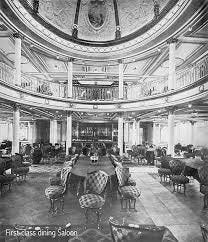
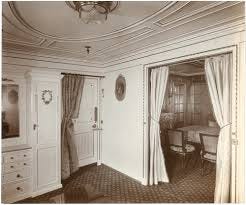
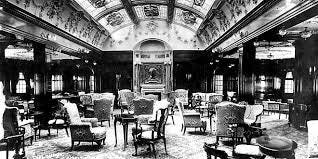
A few threads to share. The American point of view in the early months of WWI was to practice isolationism at all costs. My first surprise was to learn that in the months before the Lusitania, ships and freighters were being sunk left and right all around the British Isles, including in the English Channel and the straight between Ireland and Wales. The Germans considered anything fair game. Even more surprising was that the German government actually ran ads in New York newspapers, warning ocean-going travelers that they were entering a war zone and any ship was at risk. Germany posted the following notice in New York newspapers just a few days before the Lusitania set sail:
"Vessels flying the flag of Great Britain, or any of her allies, are liable to destruction...travelers sailing in the war zone on ships of Great Britain or her allies do so at their own risk."
Did Captain Turner know the risk? Certainly. The previous Captain of the Lusitania, Captain Dow, watched as two freighters were sunk on the Lusitania’s course merely weeks before. Captain Dow couldn't handle the responsibility of putting nearly 2000 people, or souls, in jeopardy while he was at command. Telling his bosses at Cunard of his anxiousness, he resigned/was relieved of duty. This is the backdrop into which Captain Turner took command.
Why did Captain Turner and most of the passengers on the Lusitania choose to ignore the explicit warnings and travel anyway? Most simply thought the Germans wouldn't dare attack a passenger liner. Most believed the Lusitania, capable of speeds almost twice as fast as a U-boat (A submarine was a fairly new vessel in 1915. And while they were sinking ships all around, Britain still held to its traditional ‘Naval superiority’.) And finally, passengers (and Captain Turner?) believed that once Lusitania reached Irish waters, just a few hours before reaching Liverpool, British naval destroyers would meet it and escort her safely through the final leg.
By the way, apparently many passengers knew that many vessels, including passenger ships and Lusitania, were regularly ferrying munitions from the US to Britain. Lusitania held 173 tons of rifle ammo and shells.
Perhaps the most devastating knowledge is to read about Churchill's secretive Room 40, a nondescript office in a nondescript building, where intelligence officers cracked the German naval codes and therefore knew the mission and movements of the U-boat fleet. In particular, they knew Captain Schwieger had left the Baltic Sea, was cruising north towards Scotland, traveled up and around Scotland and down towards Ireland, where he and other U-boat captains were sinking ships regularly in the weeks and even days before Lusitania approached. Sadly, it is said that Churchill pointedly withheld this knowledge from America so as not to tip the British hand and let the Germans know that their messages were being intercepted. The biggest shock of all? Britain could have prevented this catastrophe. They could have warned Cunard and Captain Turner, could have revealed the location of Captain Schwieger’s U-boat, which was seen in the days before, cruising the Irish coast. They could have rerouted the ship. Or, they could have sent an escort of destroyers.
Those were just a few of the eye-poppers for me. Yet this in no way lets all the cats out of the DEAD WAKE bag. You read DEAD WAKE to get an hour-to-hour picture of a monumental maritime and wartime tragedy. You read DEAD WAKE because it's full of fascinating world trivia: the personal life of President Wilson; the various people who made up an elite transatlantic crossing in 1915; the culture and customs of a fine cruise ship; coal-burning, U-boat technology and strategy; torpedoes, new and old life jackets, and all about lifeboats. You also read DEAD WAKE to get a minute-by-minute account of the final 18 minutes it took Lusitania to sink. That was a surprise, only 18 minutes. Just a few kilometers off the Irish coast, in full sight of land, on flat water and under sunny skies. The book is full of questions. Why didn't escorts come out to meet it? Did Lusitania really need to slow down so much in the Irish fog? Why didn't it travel across the Atlantic at top speed, it used only three of its four engines. If it had gone faster, would a day have been saved and the U-boat might’ve been avoided? How can a single torpedo sink the largest liner in the world in only 18 minutes? What did Churchill know and not know? What were the real reasons he failed to warn civilian ships and peaceful passenger liners? What happened to the lifeboats? After all, live lifeboat drills were held daily, both on shore and during crossings. And finally, did the sinking drag America right into the war? (No. America didn’t join the allied effort until two years later.)
I really enjoyed the book. It reads fast. It'll turn your high school history knowledge on the Lusitania upside down. You can find it from all platforms here.
Thank you as always for reading and sharing.
I read and write in Arizona. Two of my seven novels have hit Number 1 in their categories on Amazon.
Learn about my style of High Concept Fiction at MY WEB SITE, up in the clouds.
MD in AZ
www.MICHAELDASWICK.com




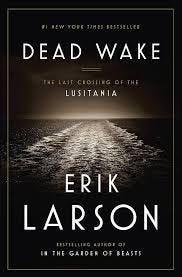
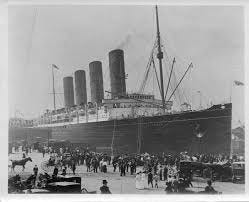
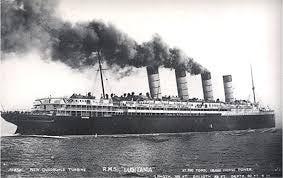
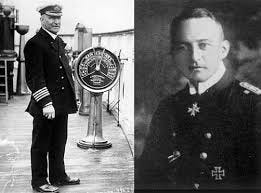

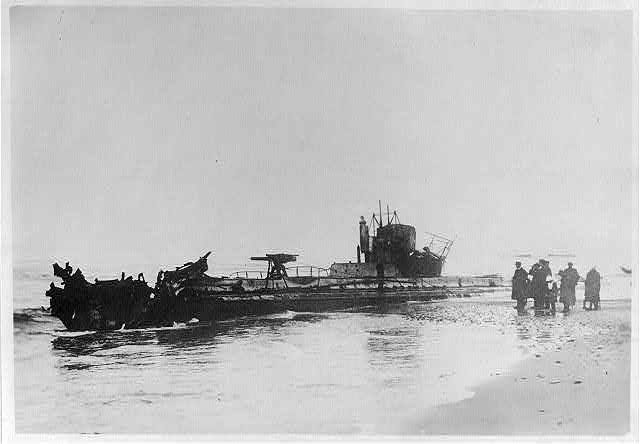
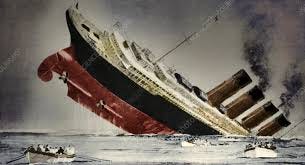

Most interesting write-up!
I'm always amazed by the depth (and width, and sometimes even height ;) ) of your reviews and musings. Would that my humble book reviews could be one fifth as engaging and encompassing...
To be honest, at first glance I was ready to dismiss this book, it not being so much in my normal wheelhouse of interest, but after reading your review I believe I will have to grab a copy of it and give it a read.
Thank You, Sir! :)